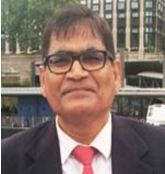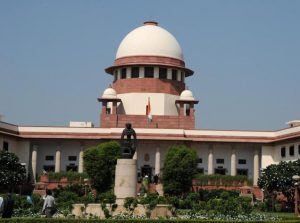 Professor Satya Narayan Misra in Bhubaneswar, April 20, 2022: Forty-six years ago, in the summer of 1976 and height of Emergency, four judges of the Supreme Court had viewed that a person has no right to appeal against unlawful detention when the state was in emergency due to internal disturbances (Art 352). They were deciding on the appeal of SP Shukla against alleged illegal detention order of ADM Jabalpur on 30th April 1976.
Professor Satya Narayan Misra in Bhubaneswar, April 20, 2022: Forty-six years ago, in the summer of 1976 and height of Emergency, four judges of the Supreme Court had viewed that a person has no right to appeal against unlawful detention when the state was in emergency due to internal disturbances (Art 352). They were deciding on the appeal of SP Shukla against alleged illegal detention order of ADM Jabalpur on 30th April 1976.
As per these judges, detention under MISA Act is open for challenge by detenues, as Art 359 suspends all fundamental rights, including right to life & liberty (Art 21) when internal emergency is clamped. Justice Beg said ‘Liberty is the gift of law & may by law forfeited or abridged.’
Justice PN Bhagawati, the high priest of judicial activism through Public Interest Litigation, had observed, “However unfortunate this situation might be, that can’t be helped”. As if this was not enough, Mr Niren De, the then Attorney General replying to a question by Justice HR Khanna had said “even if life was taken illegally, courts are helpless”.
The majority judgement in ADM Jabalpur VS SP Shukla case is viewed “as a stain on the legacy of the court for many years’. The dissenting judge was Justice HR Khanna who had observed that ‘detention without trial is an anathema to all those to love personal liberty’. In a splendid riposte to the majority verdict Justice Khanna had said that Article 21 is not the sole repository of human right to life and liberty.
Even in the absence of Article 21, the state cannot deprive a person of life or liberty without the authority of law. This is the basic assumption of rule of law in every civilized society. For Justice Khanna, life and personal liberty are inalienable to human existence. Neither life nor liberty is bounties conferred by the state nor did the Constitution created these rights.
The above dissenting judgement was given at the height of emergency when Mrs Indira Gandhi wanted judges and bureaucrats to be committed to the ideology of the ruling party rather than to the rule of law. The New York Times commenting on Justice Khanna’s dissenting judgement in its editorial had observed “the submission of an independent judiciary to be absolutist government is possibly the last step in the destruction of a democratic society”.
Justice Khanna was aware of the potential consequences of his judgement, of being superseded to the post of Chief Justice of India. He writes in his autobiography “Neither Roses Nor Thorns” that he upheld the dignity of the court during testing times. For him, ’a constitution is not a parchment of paper.
Imbecility of men, history teaches us, always invites the impudence of power” wrote Justice Khanna. Nani Palkiwala the famous jurist had observed “to the stature of such a man, the chief Justice of India can add nothing.”
When the emergency was lifted and the Janata party came to power the government amended article 352 by replacing internal disturbances with armed rebellion in the 44th amendment to the Constitution (1978).
More importantly it amended article 359 where it took out article 20 (protection against violation of law) and article 21 (right to live and liberty) from the scope of abolition of fundamental rights during imposition of internal and external emergency under article 352.
Justice Khanna quoted Justice Evan Hughes who wrote “dissent in a court of last resort is an appeal to the brooding spirit of law, to the intelligence of a future date, when a later decision may possibly correct the error into which the dissenting judge believes the court to have been betrayed”.
As if to prove his prescience and foresight, the Supreme Court in the famous Putta Swamy case (2017) has formally overruled the majority judgement of ADM Jabalpur Vs SP Sukla. Justice DY Chandrachud, son of Justice YV Chandrachud who was part of the majority verdict in 1976, has observed “constitutional democracy can survive only when citizens have an undiluted assurance that the rule of law will protect their lives and liberty against any invasion by the state.
The view taken by justice Khanna is accepted in reverence for the strength of a thoughts and courage of its conviction.’ It’s a rare judgement by a son who has over ruled his illustrious father who was CJI of India. Justice Kaul has observed that the ADM Jabalpur judgement was an aberration of constitutional jurisprudence.
The desirability of burying the majority opinion ten fathom deep has come, with no chance of resurrection. Justice RF Nariman in his recent book ‘The Discordant Notes’ writes: “The rule of law under a constitution democracy can never be sacrificed at the altar of expediency”.
 In hind sight it is easy to decry the majority opinion of four judges in the habeas corpus case. India imposed its first external emergency in 1962. In the Makhan Singh Vs State of Punjab (1964) case, the Supreme Court had ruled that the fundamental rights could be suspended for those legally detained under the Defence of India Rules.
In hind sight it is easy to decry the majority opinion of four judges in the habeas corpus case. India imposed its first external emergency in 1962. In the Makhan Singh Vs State of Punjab (1964) case, the Supreme Court had ruled that the fundamental rights could be suspended for those legally detained under the Defence of India Rules.
In Maharashtra state Vs Prabhakar case (1966) , the court struck down the refusal of the state to publish a scientific work of Mr Pravakar who as a detenu. In the other famous case involving arrest of Ram Mohan Lohia in 1966 the court had decreed that it can go into a question whether the DM had exercised the power of detention under DIR in a bonafide manner. Once the court satisfied that it was arbitrary ordered Mr Lohia was released.
However, the emergency declared in 1975 was a different kettle of fish and carried the bitter seeds of emasculating independence of institutions like the judiciary. Fear was the key; conformism was the norm. The famous jurist Granville Austin wrote that “The judges hung together, lest they will be hung”. The Supreme Court came out of the scars of suppression of judges in 1973 by asserting in Minerva Mills Case (1980) that the power of Parliament to amend the constitution is not absolute.
More importantly, it can judicially review the constitutionality of Parliamentary Acts and amendments. And strike them down if they offend the basic structure, rule of law, life and liberty in an arbitrary manner, even during promulgation of external or internal emergency.
We owe it to HR Khanna to remind us all about the majesty of rule of law, constitutional democracy, independent vigil of institutions created to exercise check and balance and that right to life and liberty is not a gift of the Constitution. It existed before the coming into the Constitution.
* Professor Misra teaches Constitution Law in KIIT School of Law.



Leave a Reply
Be the First to Comment!